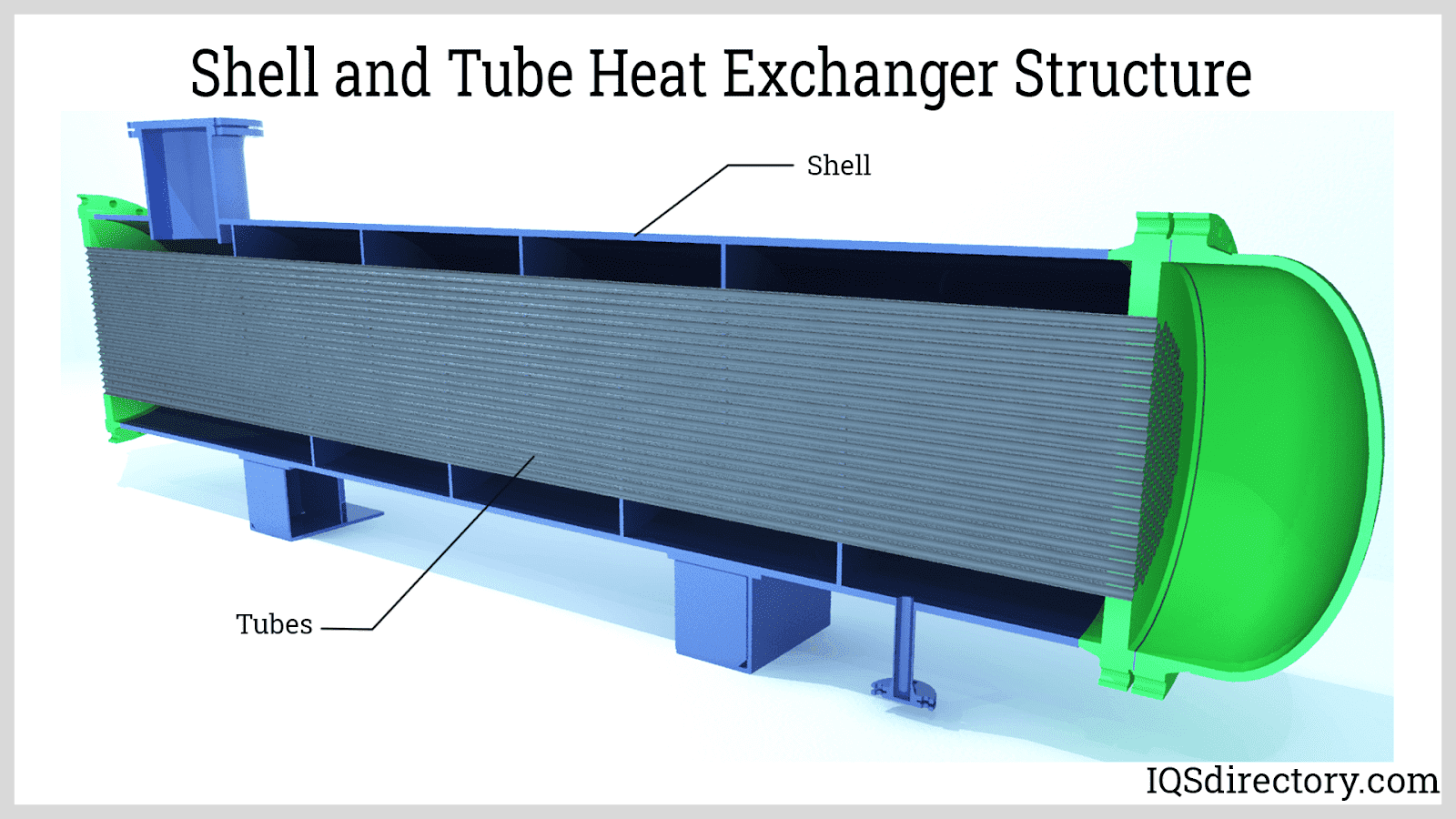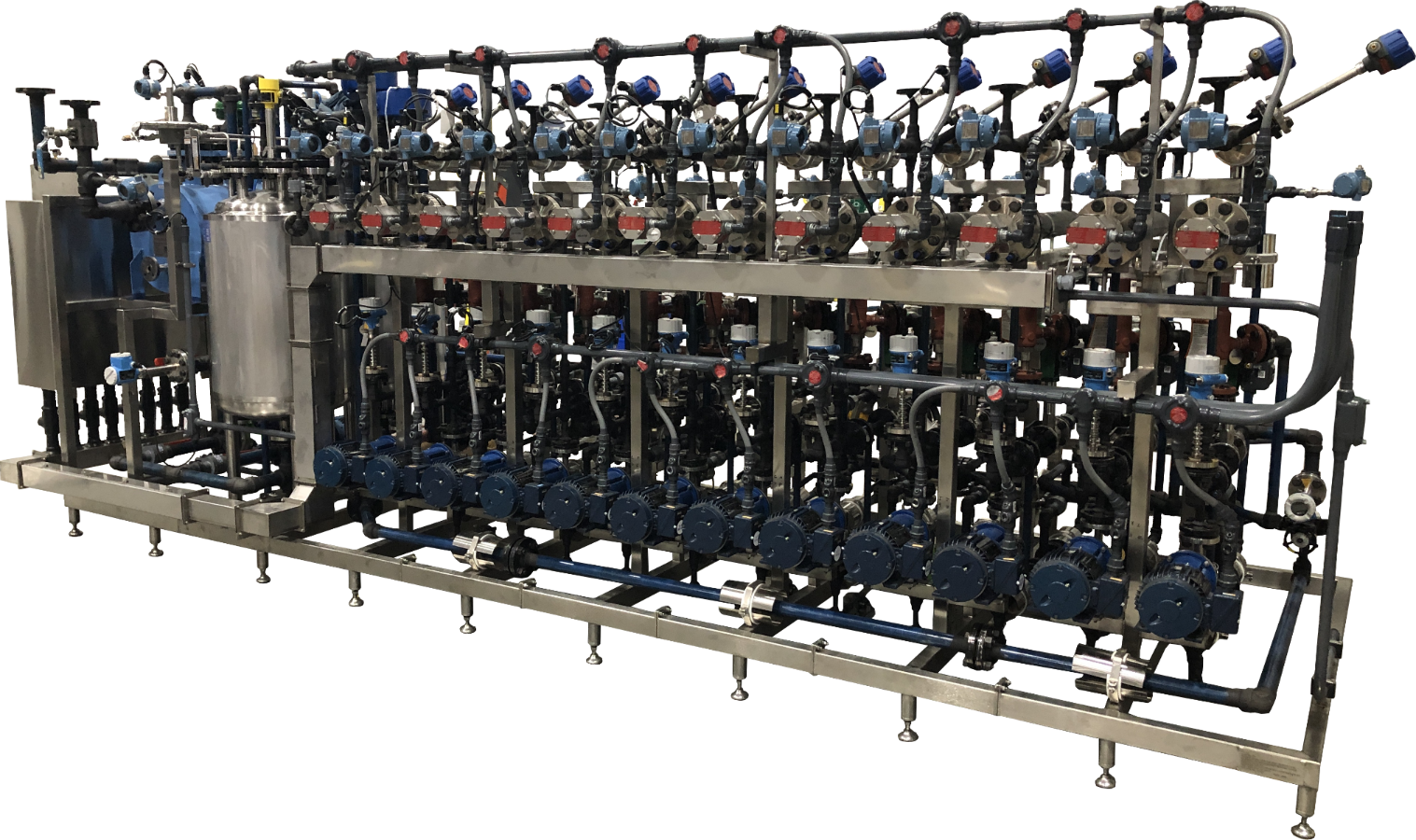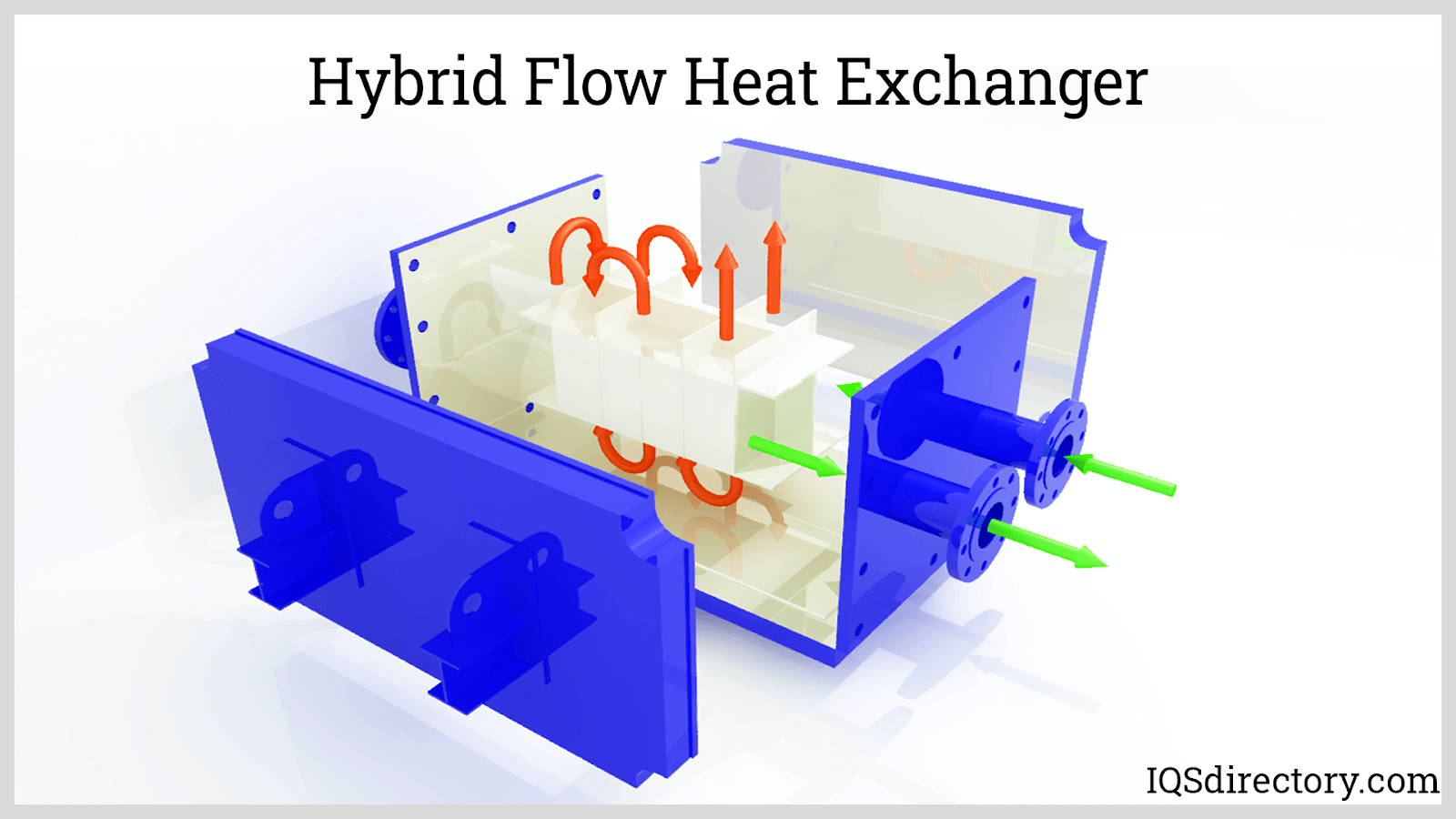The Role of Heat Transfer Equipments in Sustainable Energy Solutions for the Future
Heat transfer systems are essential in the quest for lasting power services. They optimize thermal power administration, boosting the effectiveness of sustainable modern technologies. By using systems like radiation, transmission, and convection, these systems decrease energy losses. Their duty in solar thermal and geothermal applications is especially significant. As technologies emerge, the potential for further improvements raises important concerns regarding future energy approaches. What growths will shape the landscape of sustainable energy?
Understanding Heat Transfer Solutions

The Importance of Thermal Energy Monitoring
Reliable thermal power administration is necessary for making best use of energy effectiveness and minimizing waste in numerous systems. By managing temperature and enhancing Heat transfer processes, companies can markedly decrease power consumption and operational expenses. Reliable monitoring includes the application of sophisticated technologies and methods that keep an eye on and control thermal problems within systems, making sure that energy resources are made use of efficiently. Additionally, proper thermal power monitoring adds to lowering greenhouse gas exhausts, aligning with worldwide sustainability goals. It also improves system integrity and efficiency, resulting in enhanced product quality and longer tools lifespan. Ultimately, focusing on thermal energy administration is a vital step towards producing extra sustainable energy options and fostering a responsible strategy to energy usage in property and commercial contexts.
Applications of Heat Transfer in Renewable Resource
While numerous eco-friendly energy resources promise sustainability, the efficient application of Heat transfer plays an essential role in their performance. In wind energy systems, Heat transfer is made use of for generator component cooling, boosting efficiency and long life. Geothermal power counts on effective Heat exchange in between the planet's subsurface and the liquid circulating in the system, making best use of power removal. Biomass power processes additionally gain from Heat transfer, as it helps in converting organic products right into useful fuel via pyrolysis and gasification. In addition, in hydropower, maintaining ideal temperatures in tanks can enhance power outcome. Each of these applications demonstrates the critical importance of Heat transfer systems in boosting renewable resource modern technologies, eventually contributing to a more lasting power future.
Enhancing Solar Thermal Power Effectiveness
As solar thermal power systems proceed to develop, enhancing their performance has actually become important for taking full advantage of energy outcome. Breakthroughs in Heat transfer modern technologies, such as enhanced thermal storage materials and innovative Heat exchangers, play a significant role in enhancing efficiency. By making use of advanced materials that have remarkable thermal conductivity, systems can record and transfer Heat a lot more effectively. Furthermore, integrating radar that follow the sun's path warranties that collectors obtain ideal solar direct exposure throughout the day. Making use of nanotechnology in solar absorbers can even more raise power absorption prices. Incorporating computerized control systems aids control temperatures and handle energy circulation successfully, leading to reduced losses and improved overall system effectiveness. These enhancements pave the method for more lasting solar thermal power solutions in the future.
Geothermal Heating: A Lasting Option
Geothermal heating provides a sensible option for lasting power, providing considerable ecological benefits with lowered greenhouse gas emissions. Its effectiveness and cost-effectiveness make it an eye-catching alternative to conventional furnace. Challenges related to implementation needs to be dealt with to maximize its possible influence.
Ecological Benefits of Geothermal
Although conventional home heating techniques add considerably to greenhouse gas emissions, geothermal home heating offers an engaging option that lessens ecological impact. By harnessing the Earth's inner Heat, geothermal systems utilize a renewable resource source, markedly decreasing dependence on fossil gas. This method creates very little carbon discharges, making it a cleaner alternative for business and residential heating. In addition, geothermal systems advertise energy performance, as they call for less energy contrasted to conventional home heating systems. DVS Heat Transfer Systems. The utilization of geothermal power also assists in minimizing air pollution, enhancing neighborhood air high quality and public health and wellness. As a sustainable service, geothermal home heating supports climate adjustment reduction initiatives, placing itself as an important element in the shift in the direction of a greener future
Performance and Cost-Effectiveness
How does geothermal home heating determine up in regards to effectiveness and cost-effectiveness contrasted to typical heater? Geothermal home heating shows exceptional performance, commonly accomplishing a coefficient of efficiency (COP) of 3 to 5, suggesting it generates three to 5 devices of Heat for each system of electricity taken in. This performance converts into reduced operating expense, specifically in areas with stable geothermal sources. Initial installation prices can be greater than traditional systems; nonetheless, long-lasting savings on power bills and reduced maintenance expenditures can counter these in advance investments. Additionally, several federal governments incentivize geothermal systems via refunds and tax credit histories, improving their cost-effectiveness. Overall, geothermal home heating emerges as a lasting and financially feasible choice to more standard home heating services.
Execution Difficulties and Solutions
Numerous difficulties can impede the extensive execution of geothermal heating unit, in spite of their clear benefits as a sustainable power remedy. High first installment prices often discourage investors and homeowners, making financing a substantial obstacle. In addition, the geographical limitations of suitable geothermal sites restrict accessibility in certain regions. Local guidelines and allowing processes can likewise make complex task growth, leading to delays. Public understanding and understanding of geothermal systems stay reduced, preventing approval. To address these challenges, targeted education and learning campaigns can boost public knowledge, while government rewards could reduce economic worries. Collaborating with local authorities to enhance laws might facilitate smoother task approvals, inevitably promoting the adoption of geothermal home heating as a practical, lasting energy option.
Advancements in Heat Transfer Technologies
Developments in Heat transfer modern technologies play an essential function in boosting energy efficiency and sustainability. Advanced Heat this hyperlink exchangers and phase adjustment products go to the center of these advancements, using considerable enhancements in thermal monitoring. These innovations not just optimize power use yet additionally contribute to lowering environmental effect in various applications.
Advanced Heat Exchangers
Advanced Heat exchangers play a vital role in improving energy efficiency throughout different applications in sustainable power options. These devices facilitate the transfer of Heat in between 2 or even more liquids, significantly decreasing power usage in procedures such as industrial heating, cooling, and power generation. Innovations in products and design, such as the usage of nanofluids and compact arrangements, have resulted in boosted thermal performance and reduced size needs. Furthermore, innovations in electronic monitoring and control systems enable for maximized operation, more enhancing performance. By click here to read lessening waste Heat and optimizing energy healing, progressed Heat exchangers add to decrease carbon footprints and sustain the change toward eco-friendly technologies. Their continued advancement is important for accomplishing global energy sustainability objectives.
Stage Modification Products
The assimilation of phase modification products (PCMs) right into Heat transfer innovations represents a considerable advancement in energy administration and effectiveness. PCMs absorb and release thermal power during their stage modifications, making it possible for effective temperature policy in structure materials and energy systems. By storing excess Heat during height durations and launching it when need increases, PCMs contribute to fill changing and power conservation website link - DVS Heat Transfer Systems. This capability boosts the efficiency of renewable energy systems, especially in solar thermal applications. In addition, PCMs can enhance the thermal comfort of interior atmospheres, minimizing dependence on traditional heating and cooling methods. As innovations in PCM formulations remain to emerge, their function in sustainable power options is poised to expand, supplying encouraging opportunities for future research and application

Future Prospects for Heat Transfer in Lasting Power
As the demand for sustainable energy solutions proceeds to rise, the role of Heat transfer systems is ending up being significantly crucial in shaping future technologies. Advancements in designs and materials are expected to enhance efficiency in Heat transfer, reducing energy losses in different applications. The combination of innovative thermal storage space systems, such as phase change materials and thermochemical storage, will allow much better monitoring of energy resources. Research right into nanofluids and biomimetic Heat exchangers might better optimize thermal performance. The fostering of clever modern technologies will certainly allow for real-time monitoring and flexible control of Heat transfer procedures. These innovations are poised to significantly contribute to the total effectiveness and sustainability of power systems, leading the way for an extra energy-efficient future.
Regularly Asked Inquiries
Exactly How Can Individuals Implement Heat Transfer Solution in your home?

People can apply Heat transfer systems in your home by installing energy-efficient home appliances, using radiant heat, and optimizing insulation. These measures enhance power effectiveness, reduce costs, and advertise sustainable practices in property environments.

What Are the Prices Associated With Installing Heat Transfer Systems?
The prices related to mounting Heat transfer systems vary extensively, usually including tools, installment labor, and upkeep. Aspects such as system kind, home dimension, and regional regulations greatly influence the total expense involved.
Exist Federal Government Incentives for Heat Transfer System Installations?
Government motivations for Heat transfer system installations vary by area and can include tax obligation discounts, credit scores, and gives. These financial advantages intend to encourage fostering, eventually advertising power performance and decreasing environmental impact within areas.
Exactly How Do Heat Transfer Solutions Effect Power Bills?
Heat transfer systems significantly affect energy costs by optimizing energy efficiency. By boosting the transfer of Heat, these systems reduce energy consumption, bring about lower energy costs and producing a more sustainable strategy to energy administration.
What Maintenance Is Required for Heat Transfer Systems?
Maintenance for Heat transfer systems includes routine assessments, cleaning of elements, examining fluid levels, ensuring appropriate insulation, and changing used parts. These jobs help preserve performance, avoid failures, and extend the system's functional life expectancy.
These systems promote the movement of thermal power from one tool to another, allowing the transfer of Heat for power, home heating, or air conditioning generation functions. Geothermal power counts on reliable Heat exchange in between the earth's subsurface and the fluid circulating in the system, making best use of energy extraction. Furthermore, geothermal systems advertise power effectiveness, as they call for much less energy contrasted to conventional home heating systems. Advanced Heat exchangers play a necessary role in improving energy efficiency throughout numerous applications in sustainable energy options. Heat transfer systems especially influence energy costs by optimizing energy efficiency.